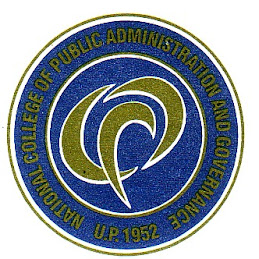My thoughts on managing the campus space of U.P. Diliman. Excerpts from the October 2006 issue of U.P. Forum.
Managing the campus’s multifunctional space
The UP Diliman campus is not simply a popular destination for those engaged in intellectual pursuits. Through the years, it has come to be known as a venue for a diverse range of activities, including political demonstrations, festivals, romantic dates, wedding pictorials, ghost hunting, recreation activities, weekend markets, public art, and even informal urban settlement. On any given day, one might see banners protesting the dismissal of contract janitorial personnel flying high against the pillars of Quezon Hall, UP’s seat of administration; a gaggle of tourists eagerly posing beneath the Oblation, the University’s iconic naked male statue; and groups of people having picnics, jogging, playing soccer, or simply sitting down to chat in and around the famous lagoon and Sunken Garden.
(skipped paragraphs)
Dr. Ebinezer Florano, who teaches environmental management (Note: Should be "environmental governance") at the National College of Public Administration and Governance (NCPAG), is also in favor of putting up fences around the campus. “A good administrator would always put the interests of students, staff and faculty members above anything else,” says Florano. “The fact that we cannot regulate who comes in and out of our space makes the entire campus an administrator’s nightmare.”
Sanctioned tolerance
Rallies provide a good example of how relatively easy it is for people to move in and out of the campus. Quezon Hall, for example, is becoming a favorite converging point among political organizations, neighboring urban poor communities, workers, and various other interest groups who have little or nothing to do with the University, during mass actions about issues that may not even concern the University or its officials.
On August 8, for instance, protesters comprising members of the UP Janitors Association (JSA) and their sympathizers formed a picket on the south wing area of Quezon Hall when Care Best International (CBI) was awarded the contract to perform janitorial services for the south sector of the campus. The protesters kept their vigil for several days hoping to make the University intervene and compel the new agency to absorb displaced workers from the previous agency despite the fact that no employer-employee relationship actually exists between UP and the employees of any of the subcontracting agencies. The University adopted a policy of contracting out janitorial and security services since 1984 in compliance with the procurement provisions of RA 9184 (An Act Providing for the Modernization, Standardization and Regulation of Procurement Activities of the Government). Since then, all janitorial services have been rendered by private agencies which compete as independent contractors in a public bidding.
The vigil, which lasted for several days, failed to disrupt the daily operation of Quezon Hall offices but raised obvious security and administrative concerns. Quezon Hall looked no different from an evacuation shelter with the protesters, their families and sympathizers, cooking, dining, sleeping, drying their clothes, and literally cleaning themselves in the picket site.
This indicates, according to Florano, that the University’s image as a bastion of academic freedom and activism is both a blessing and a curse that the UP community has had to accept. But even though he sees no reason for the administration to completely regulate such use of the University’s public space, he believes it will be in everybody’s interest if the campus administrators would be informed of these activities beforehand. This would make it easier for the latter to provide the necessary security for both participants and ordinary bystanders. “Those who now run our campuses were themselves immersed in UP’s activist tradition so I don’t think they will be allergic to such causes,” he says.
Actually, a number of security measures have long been put in place to address these concerns. Memorandum No. 18 issued by former UP President Edgardo J. Angara in 1983 states that “rallies and demos may be held within the University’s premises with no need for a permit from the City/Town Mayor.” But the same memo also specifies that “the University’s own rules and regulations” would govern these activities. The standing policy, based on a July 25, 2003 memorandum issued by then Chancellor Emerlinda Roman, is that “rallies, demonstrations, vigils and other similar activities may be allowed only with written permission of the Vice Chancellor for Community Affairs.” These activities cannot go beyond six in the evening.
According to Florano, administrative sanctions may sometimes be necessary not only to avert vandalism and anarchy, but also to minimize the impact of disruptions on other activities. A lightning assembly blocking major roads in the Diliman campus, for instance, could easily paralyze the flow of jeepneys plying the Pantranco and Philcoa route. Florano maintains that people should consider everyone’s welfare regardless of where they sit in the intellectual divide. “In Japan, for instance, you cannot just hold rallies whenever or wherever you feel like it,” he says.
The Japanese people, according to Florano, learn early to recognize that they are part of an interdependent society and normally think twice about causing inconvenience especially to spaces deemed public. By contrast, we Filipinos are more aggressive in asserting our individual rights, says Florano, “and public spaces—like those in public universities—are being used as venues for these expressions.”
Symbolic identity
Florano believes that the University as an academic institution is not mandated to serve as a venue for non-academic activities. “But if we are to keep our healthy democratic tradition, the University has to accommodate these activities or we will not be living up to our name as a university of the people.” The significant public role the campus plays is representative of the larger purpose the University serves for the country. The campus is a park. It is a cultural center and meeting place. And more importantly, it is a symbol of academic excellence, civic pride, and the rich and lasting heritage shared by generations of UP alumni. The landscape, the buildings, and the events that take place in these spaces all form part of the collective memory of the institution.
Like Florano, Cal favors the free expression of sentiments, even if the makeshift encampments and protest banners in halls and lobbies can be an eyesore.
“I think these activities should be allowed if they do not violate any law or do not go beyond the basic rights provided in the constitution,” says Cal. “They should be properly recognized, especially in an academic community.”



No comments:
Post a Comment